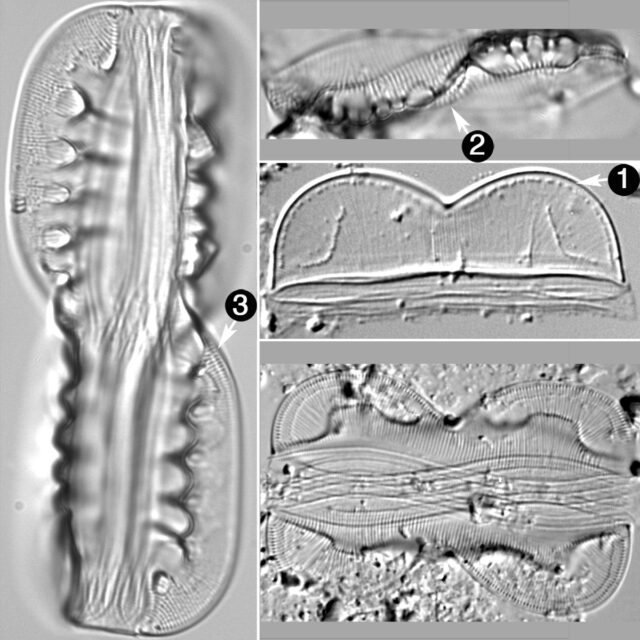Guide to Entomoneis

Credit: Loren Bahls
- Bilobate, raised keel
- Valves torsioned
- Raphe positioned within raised keel
The frustules of Entomoneis are structurally complex, with numerous girdle bands. Valves are lanceolate or linear with acute apices. In processed material, cells usually come to rest in girdle view, although many different viewing aspects are possible. Cells are rarely viewed in valve view (but see image with #2). The valve face is laterally compressed but highly arched to form a thin bilobate wing, or keel. The cells are also torsioned along the apical axis. As a result, cells have considerable relief in both apical and transapical axes, such that often only the diagonally opposite lobes of keels are in focus at one time. The raphe is positioned at the outer edge of each keel and terminates close to each pole. External and internal raphe endings are straight and not expanded, or only slightly expanded. Fibulae, appearing as short, bar-like struts borne on transapical costae, may occur at many levels of focus beneath the raphe, where the two parts of the keel join. Striae are uniseriate to multiseriate, consisting of small round poroids occluded by hymenes. Cells are solitary and typically lightly silicified.
Entomoneis is a large marine epipelic genus, with only a few representative species from fresh and brackish inland waters.
 Diatoms of North America
Diatoms of North America